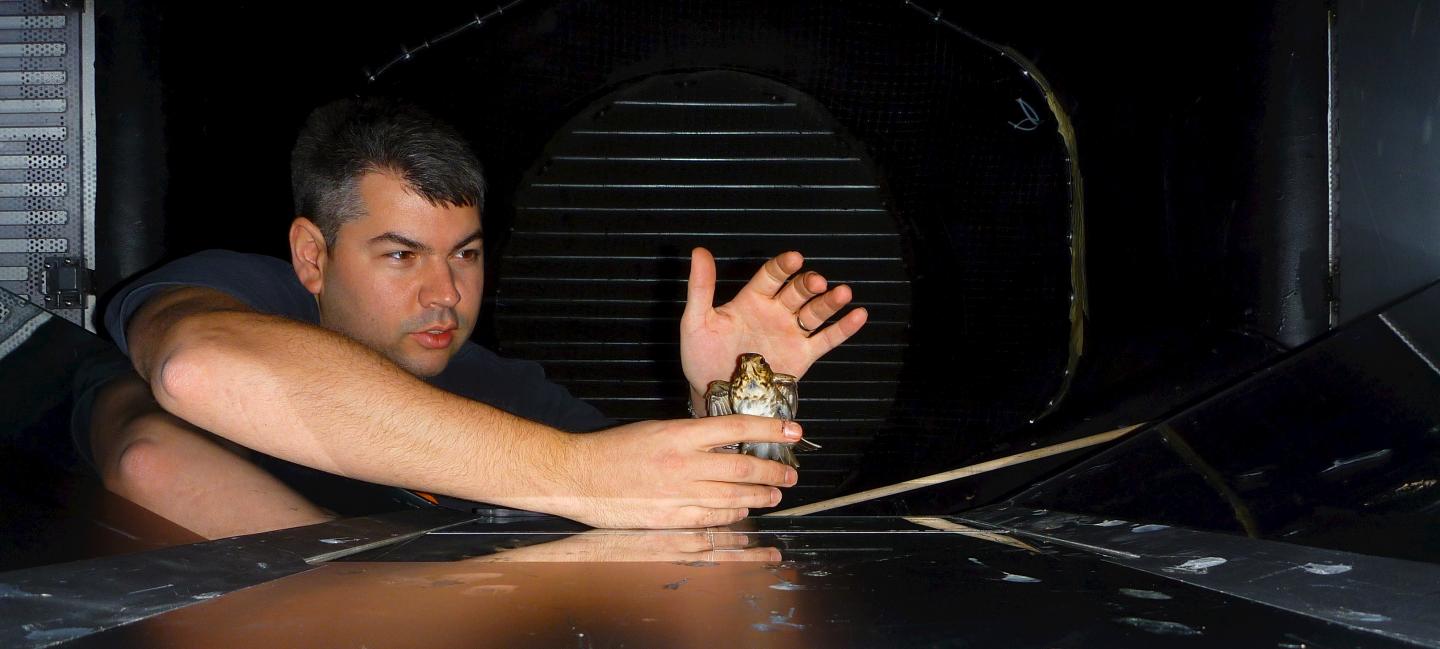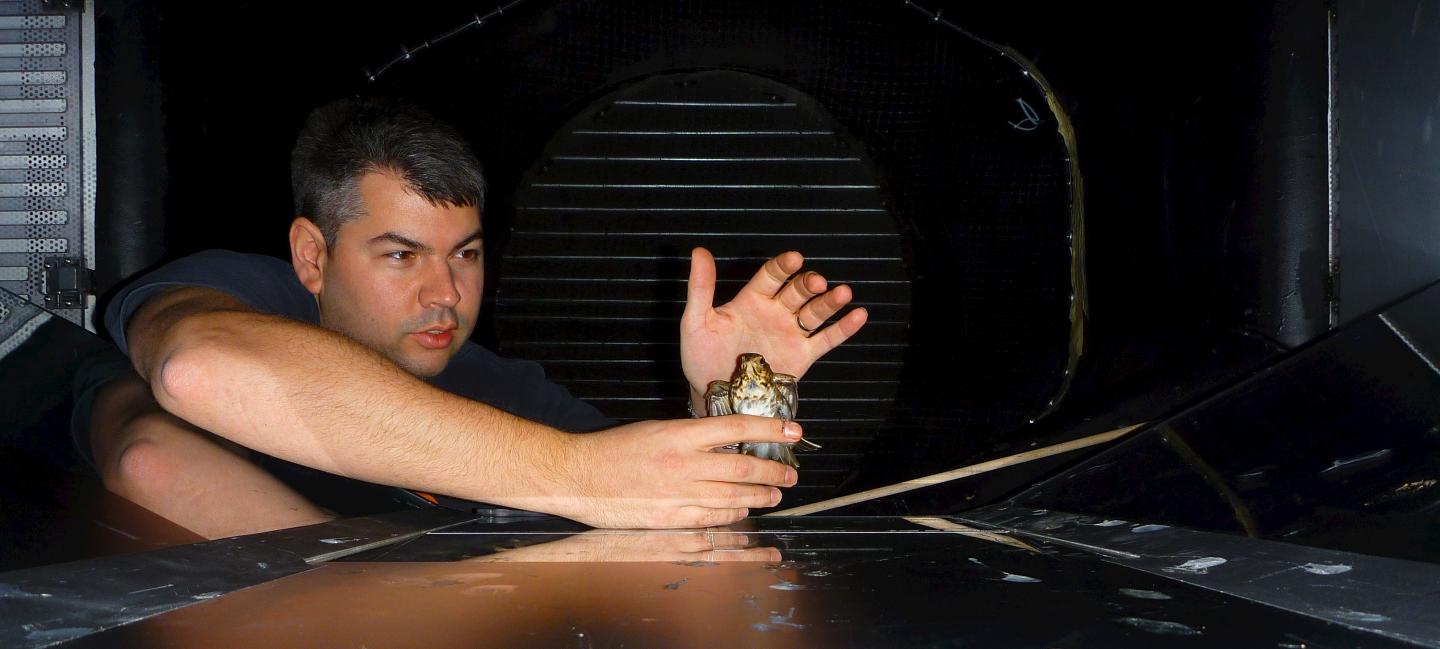
Credit: UMass Amherst
AMHERST, Mass. – Migrating birds complete long non-stop flights of many hours for songbirds and days for some shorebirds to reach breeding or wintering grounds. During such flights a bird's metabolic rate is very high, fueled by stored fat, but also by burning the protein in muscles and organs in a process that is not well understood, says eco-physiologist Alexander Gerson at the University of Massachusetts Amherst.
Now he has received a three-year, $756,000 National Science Foundation grant to thoroughly investigate the consequences and mechanisms of this phenomenon, which sometimes leads to dramatic reductions in migrating birds' muscle mass and organs but may not result in significant loss of function.
As he explains, "There is evidence that some birds see a 20 percent reduction in muscle mass and up to 50 percent mass losses in the liver, intestine, kidneys and other organs except the brain and lungs. In one of the longest flights documented in this hemisphere, the blackpoll warbler during migration flies 22 hours over water, where they absolutely cannot stop. When you run a marathon like that, you either run out of fuel or water, but these birds can produce both by metabolizing their muscle and organ tissues."
He adds, "We're interested in what happens during flight, where the energy comes from, and how they maintain water balance. Water is produced from metabolism, and breaking down protein yields the most. But what happens when you lose 20 percent of your pectoralis muscles? Do you lose function or just size? These are a few of our questions."
Gerson says this study will use two ultra-specialized tools not available to most researchers: a field-portable quantitative magnetic resonance imaging (QMRI) machine, and a wind tunnel specifically designed to study long duration flight in birds, one of just three in world, located at the Advanced Facility for Avian Research at Western University in London, Ontario.
The experimental series will look at body fat, lean mass and water content in one larger species, Swainson's thrush, and one smaller, the yellow-rumped warbler, in the field and in wild birds flying in the climate-controlled wind tunnel. There, researchers can manipulate such factors as humidity and temperature to study the amount of water lost to respiration. This is relevant to climate change, Gerson notes, because flying in warmer air means more protein and water loss.
His research team will also look at water-loss rates in non-flight conditions, at rest, and look for differences among migrants and non-migrants. Further, Gerson and colleagues will conduct metabolic phenotyping and use transcriptomics to explore molecular mechanisms of protein breakdown and regeneration with UMass Amherst molecular biologists Courtney Babbitt and Larry Schwartz.
Gerson intends to engage many undergraduate and graduate students from diverse backgrounds in the research, training them in a range of cutting-edge techniques applicable to many science, technology, engineering and mathematics (STEM) fields. They will in turn develop and implement science communication and outreach programs for middle school students in a local low-income school district yet to be determined.
At the end of three years, Gerson says, "We hope to better understand the influence of climate on flight metabolism and have a better understanding of functional consequences of protein breakdown, which has the potential to be exciting because they burn a lot of muscles and don't seem to show any dramatic functional loss. It may shed some really new light on questions that have been around for quite some time."
###
Media Contact
Janet Lathrop
[email protected]
413-545-0444
@umassscience
http://www.umass.edu





